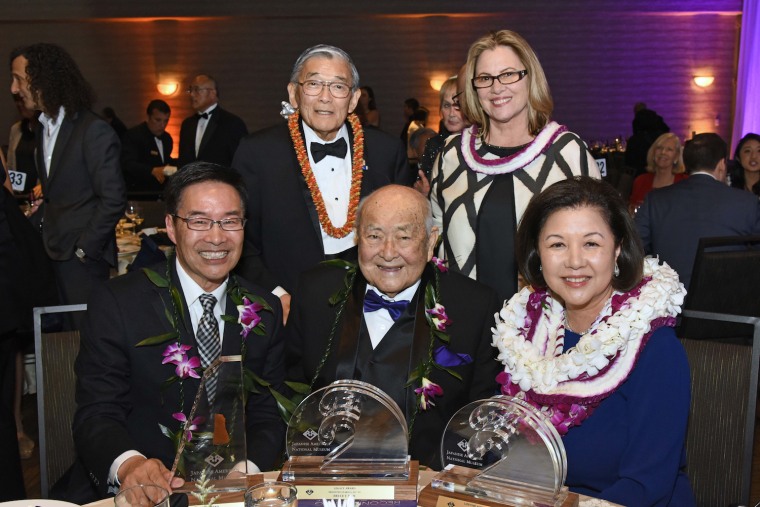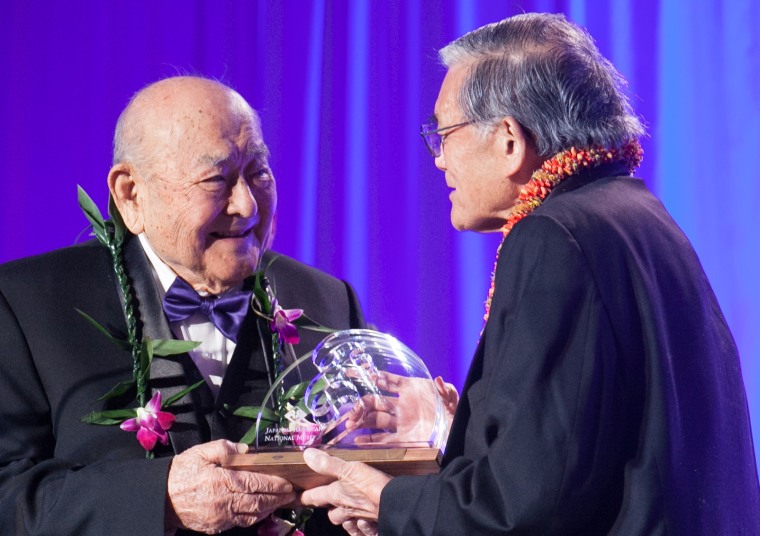When the Japanese American National Museum (JANM) in Los Angeles opened its doors in the spring of 1992, it lost out on press coverage to the L.A. riots, Chris Komai, a former employee, recalled.
Virtually nobody knew the museum was open at the time, he said, but the scant media attention didn't faze JANM's founding president, Bruce Kaji.
“All these larger things that the Japanese American National Museum involved itself in over its 20-something years of existence is because Bruce made that decision to look outward, to make a museum for everyone, including all Americans.”
“He was always the most optimistic person, even after the riots,” Komai said. “He never showed he had any doubts on how we were going to succeed.”
JANM has grown to house the largest collection of Japanese-American artifacts, according to the nonprofit Densho Encyclopedia, which chronicles Japanese-American history.
Kaji witnessed the museum thrive and contributed to its growth until his death on Oct. 26 at his home in Torrance, California. He was 91.
Years before the idea for JANM materialized, Kaji had a dream to establish a museum that would share the World War II stories of Japanese Americans, Akemi Kikumura Yano, a former JANM president and CEO, said.
As a teenager, Kaji and his family were among the approximately 120,000 people of Japanese ancestry who were forced into incarceration camps during World War II. He believed it was important to share the war stories of Japanese Americans to ensure they would never be forgotten and that incarceration would not happen again, Irene Hirano Inouye, who led the museum in different roles for 21 years, said in an email.
“Bruce was so driven,” Yano recalled. “His focus was laser beam sharp right on getting this museum built.”
In 1985, JANM incorporated as a nonprofit, and Kaji played an instrumental role in fundraising and securing a lease for the museum.
Those who worked with him credit Kaji's embrace of individuals with diverse expertise who could contribute — including city planners, architects, businesspeople, and scholars — and openness to sharing leadership for the success JANM has seen.
“I think he had the wherewithal he needed to bring in top leaders in their field because creating something that large, you don’t do it by yourself,” Yano said. “You need to call in the best people.”
While Kaji was JANM's founding president, he agreed to take a lower profile as the organization expanded, Komai recalled, allowing others to lead it into the future. Inouye was appointed JANM's executive director in 1988 and was named its president and CEO in 1999. She led the organization until her departure in 2009.
“Sometimes 'founding leaders' guard their leadership role but Bruce served as the 'cheerleader' who encouraged each new milestone the museum achieved,” Inouye said.

Kaji's inclusivity was also reflected in his decision to establish the museum as an institution that would be open to all Americans, rather than solely Japanese Americans.
While JANM isn't particularly large, Komai said, it has taken exhibitions internationally to countries as far as Japan and Brazil. It has also become one of 200 Smithsonian affiliates.
“All these larger things that the Japanese American National Museum involved itself in over its 20-something years of existence is because Bruce made that decision to look outward, to make a museum for everyone, including all Americans,” Komai said.
“He was always the most optimistic person, even after the riots. He never showed he had any doubts on how we were going to succeed.”
One of Kaji's most important successes was his ability to unite different groups behind one project, Komai recalled.
In the development stages of the museum, Kaji helped bring together two groups with distinct interests. The first was concerned with building the museum in L.A.'s Little Tokyo. The second was a group of Japanese-American World War II veterans who wanted to preserving the stories of their experiences in the 100th Infantry Battalion and the 442nd Infantry Combat Regiment — both of which were predominantly made up of Japanese-American soldiers — as well as the Military Intelligence Service, where Kaji served during the occupation of Japan.
Earlier this year, JANM presented Kaji with its Legacy Award recognizing his contributions to the organization.
“Bruce Kaji was a pillar of the Japanese American community in Southern California and it is not an exaggeration to say that without his visionary leadership, the Japanese American National Museum might never have been founded,” Norman Mineta, chair of JANM’s board of trustees and a former member of the cabinets of former Presidents Bill Clinton and George W. Bush, said in a statement.
Komai agreed.
“All of us who have been involved with the museum for any time, especially starting from when we first opened, we all understand that without Bruce, none of this would have happened because of his personality,” he said.
Follow NBC Asian America on Facebook, Twitter, Instagram and Tumblr.

